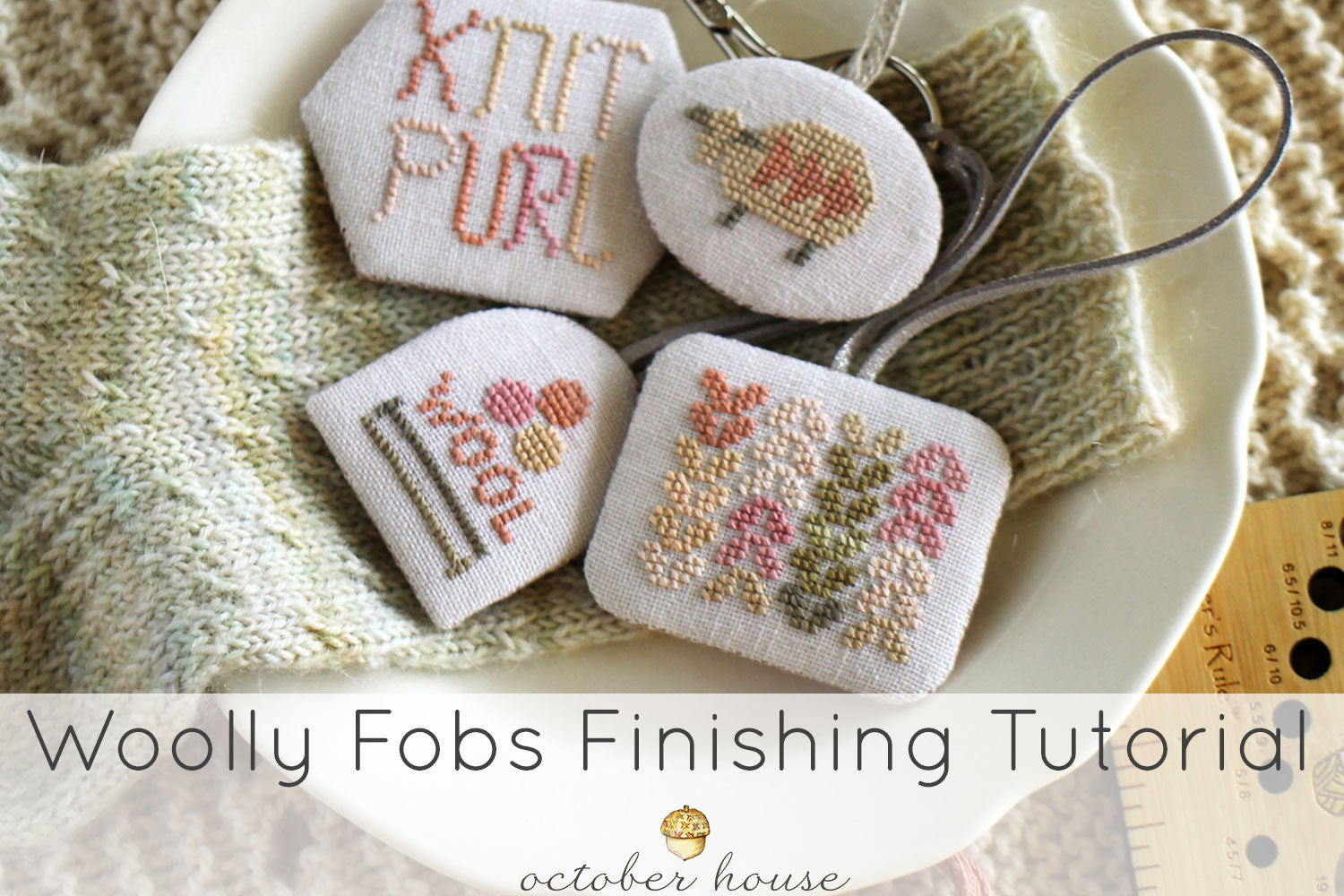March 06, 2020

Our little Woolly Fobs are the perfect accessory for your scissors! They also make a great floss ring "doodah".
If you're worried about how to finish these little cuties, look no further! Our easy tutorial will walk you through each step.
SUPPLIES

PREPARE THE PIECES




Using a basting stitch, baste all around the stitching 1/8" to 1/4” in from raw edge. I like to start at the bottom center and secure my thread with a knot and a small backstitch. (Remember, you’re going to be tugging on this thread in just a moment, so it needs to be secure!)

Repeat steps 3-5 for the back of the fob, using your backing fabric.

LACING THE SHAPES

4. Fold an 8” length of trim or cording in half and tack to back of stitching, centering at top of design, using needle and thread and several tack stitches.

ASSEMBLE THE FOB
Now you’re ready to sew the front and back together. Now is the time to get out your good eyeglasses (if you’re blind like me) and move to a nice, bright spot!


3. Taking very small stitches (1/8" or less), whipstitch the pieces together all the way around. I tend to start at the bottom center.


You can see what a nice, neat edge you get when you make the stitches small, even and regular.
4. When you get back to the beginning stitches, overlap them with a couple of stitches.
5. Bury and secure your thread by running your needle in between the front and back twice. You can see here, where I’ve inserted my needle at the center of the fob and run it out to the edge.

I’ll do this once more and then send it to the middle back to cut the thread:


And that’s it! You’ve got a fully finished fob!


I'm Robin, the designer behind October House. You've found my journal, where I talk about stitching, sewing and anything else that might catch my fancy!
Make something beautiful today!

"My best friend is a person who will give me a book I have not read." - Abraham Lincoln



